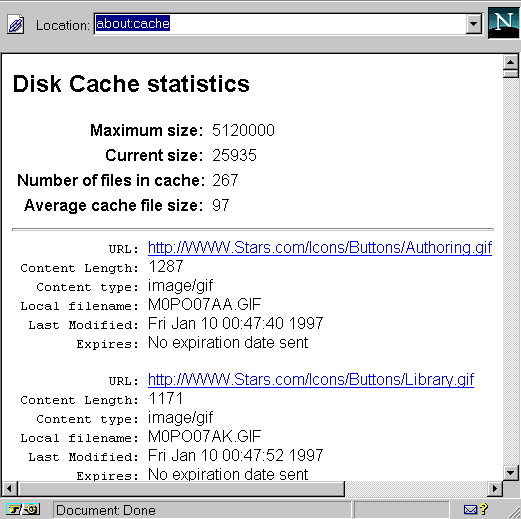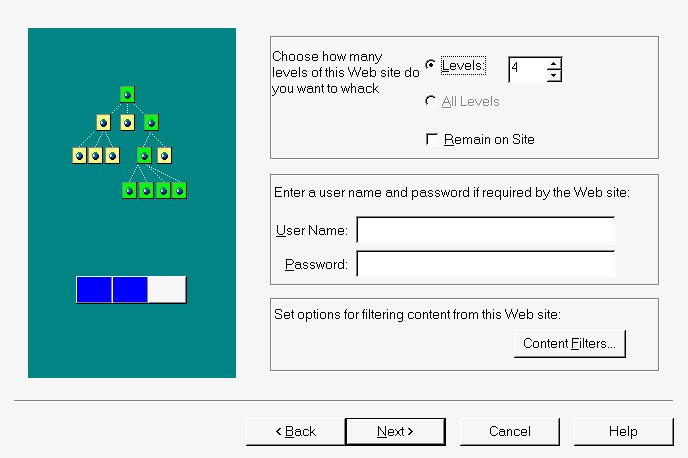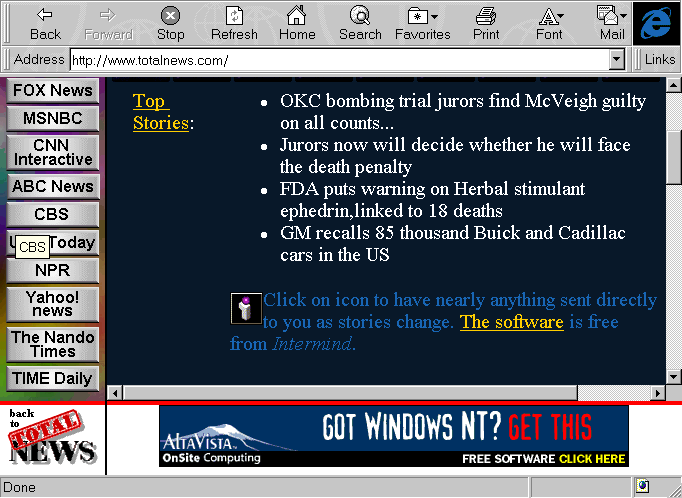Web Focus: Technical Aspects of Copyright and the Web
In April a former colleague of mine from Leeds University sent a message to me about a strange copyright statement she had come across on the web, and asked for my comments. I was also intrigued by the statement and, on 23 April, sent the following message to the lis-elib Mailbase list
A strange copyright statment (sic) at the URL http://clans.cla.co.uk/www/auths.html has been brought to my attention.
It states that readers are not authorised to:
(a) Alter the material in any way. (b) View or print the HTML source code.
Statement (b) sounds very odd. I’d have thought no more about it, but it comes from The Copyright Licensing Agency Ltd - an organisation which sounds like it should know about copyright law.
Any comments?
Thanks
Brian
The posting generated a lot of discussion, with 37 messages posted during the last week in April [1].
Shortly afterwards I was asked to take part in a seminar on Copyright and the Web organised by TALiSMAN [2]. This articles gives a summary of my talk.
Technical Aspects Relating to Copyright and the Web
Attending a talk by a copyright expert can be a worrying experience, as it seems that just about everything is covered by copyright. The aim of my talk was to describe technical developments on the web which relate to copyright and the many ways in which copyright can inadvertently be infringed.
What Do We Want?
What do we, as web users, information providers and service providers want from the web, related to use of the web and electronic copyright:
- A Quicker, More Reliable Web
- We all know how slow the web can be.
- Protection For Our Intellectual Property
- As web authors / developers we want to protect our intellectual property.
- Sensible Ways of Including Resources
- We want to avoid delays and bureaucracy in processing copyright requests, both when we wish to use copyirghted resources in some way, and when others wish to use our resources.
- Sensible Copyright Statements on our Pages
- We want to avoid copyright statements which show no understandings of web technologies.
- Clarification of Responsibilities
- We want to clarify with use and misuse of copyrighted resources is my responsibility, my institution’s, the information provider, or perhaps even the manufacturer of the software I’m using?
Caching
Client Side Caching
The web works by resources being copied from a remote server to a local client machine. The resource may be stored in a local (client) cache. The contents of a client cache may be viewed by giving the URL about:cache in Netsape or using the Options menu in Internet Explorer.

Figure 1 Managing a client cache
Little control is provided over management of a client side cache. If a copyrighted resource is stored in a client cache for an extended period, who is breaching copyright - the end user, the computing service (which installs and configures the browser), the software vendor, or even the information provider (for failing to provide expiry date information for automated processing)?
Server Side Caching
Many institutions run institutional server caches. In addition, JISC is funding a national cache, which is managed by the universities of Manchester and Loughborough. The national cache has an importance role to play in conserving expensive international network bandwidth. If, however, an institutional or national cache stores copyrighted (or illegal) resources, who is responsible?
Offline Browsers
Offline browsers are useful for:
- Giving presentations when no network available
- Reducing online charges
- Retrieving resources when network / server load is low
- Ensuring consistent retrieval time
But:
- Do they breach copyright?
- Does the user breach copyright?
WebWacker (illustrated) is a well-known off-line browser. However is use of such tools a breach of copyright?

Figure 2 WebWacker
Configurable Views Of Web Resources
Recent developments (e.g. Apple’s HotSauce) enable end user to configure their view of a web site. For example a user may want to configure a view of an American Sports information gateway, such as Yahoo, so that Soccer should be called Football and Baseball should be a sub-category of Rounders. Would a tool that provided an end user will this flexibility be considered to be breaching copyright by altering a web resource?
Virtual Documents
What are the copyright implications for virtual documents? For example Merseyworld [3] provides access to Internet standards using a CGI program to retrieve a document and format it (using frames and embedded text / graphics). If a header is appended to a copyrighted document (unlike the RFC illustrated), is this alteration of the appearance of a document a breach of copyright?

Figure 3 Merseyworld
Embedding Controls
A paper on Bookmarking Service for Organizing and Sharing URLs [4] was presented at the WWW 6 conference. It described WebTagger which uses a proxy service which adds buttons at top of pages for bookmarking. Is this “altering the appearance of a copyrighted document”?

Figure 4 WebTagger
Including Links
TotalNews [5] has links to over 1,000 news sources. TotalNews uses frames to surround material from other sites with its ads. Bruce Keller, who works for a law firm representing CNN, Wall Street Journal, etc. is reported as saying “.. What TotalNews is doing is a trademark and copyright violation”. What are the copyright implications in including links in your web pages? Would a court agree that the image illustrated in Figure 5 misrepresented the owner of the pages?

Figure 5 TotalNews
Solutions
There are technical solutions which can address copyright infringements, such as:
- Using Java to control the display of images, thereby preventing people from stealing images from your website. (For example, see ImageGuardian [6]).
- Add digital watermarks to multimedia resources.
- Include expiry dates in HTTP headers.
- Use proprietary solutions, such as Adobe PDF.
However such solutions may be expensive, time-consuming to implement, or may degrade the quality of your web service by causing performance problems.
Copyright Statments
Rather than applying a technical solution, you may wish to provide a helpful copyright statement, such as the ACM statement: “Permission is granted to make digital or hard copies of part or all of this work for personal or classroom use is granted with or without fee provided that copies are not made or distributed for profit .. And that copies bear this notice and full citation on the first page…”
How about adding:
- Permission is granted to make use of caching, off-line browsing and similar technologies to enhance web performance purposes only.
- Small parts of this resource may be included in other documents for non-commercial use.
- Minor changes may be made to this content and appearance of this document by, for example, automated tools, provided the meaning of the article is not altered. However adverts may not be included.
- This resource may be indexed by indexing tools.
- Read the online FAQ for further details.
- Fill in the online form to submit other copyright requests.
- Permission is granted to link to this resource.
Conclusions
Use of the web relies on the copying of, often copyrighted, resources. Effective use of the web, through the use of caching technologies, off-line browsers, etc. will increase the amount of copying.
Institutions need to think carefully when formulating copyright statements, to ensure that such statements not only safeguard the author’s and institutional rights, but also accept the way in which the web works.
References
[1] “Strange Copyright Statement” thread on lis-elib Mailbase list,
http://www.mailbase.ac.uk/lists/lis-elib/1997-04/0045.html
[3] TALiSMAN Copyright and the WEB seminar,
http://www.talisman.hw.ac.uk/events/seminars/copyright/copyright.html
[3] Merseyworld Web site,
http://www.merseyworld.com/control/techwatch.html
[4] Bookmarking Service for Organizing and Sharing URLs,
http://www6.nttlabs.com/HyperNews/get/PAPER189.html
[5] TotalNews Web site,
http://www.totalnews.com/
[6] ImageGuardian Web site,
http://demo.maximized.com/ImageGuardian.htm
Author Details
Brian KellyUK Web Focus,
Email: B.Kelly@ukoln.ac.uk
UKOLN Web Site: http://www.ukoln.ac.uk/
Tel: 01225 826838
